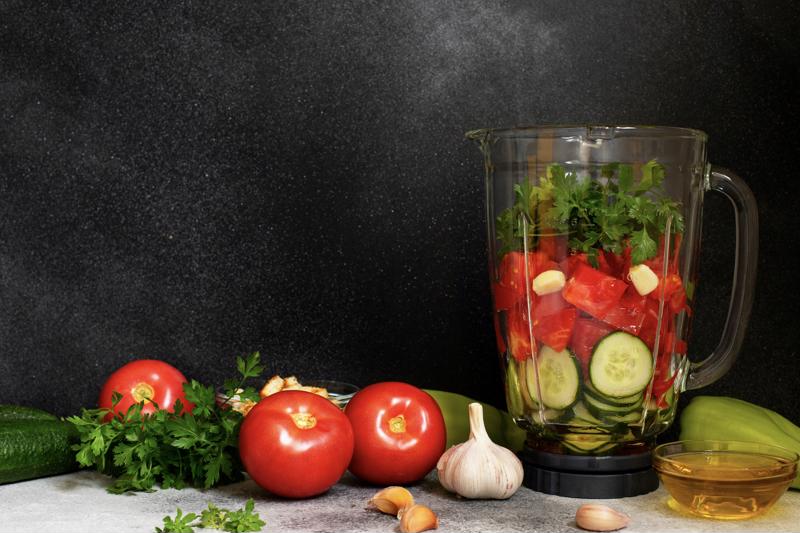With heatwaves bearing down in many parts of the country, soup probably isn't the most popular item on your menu right now – unless of course, that soup is served cold. We're talking about gazpacho, the room-temp bisque from the south of Spain, and a seasonal interloper if ever there was such a thing.
In the great city of Austin, culinary arts students won't have to look very far to get their gazpacho fix. From Peche on Fourth street to Jeffery's on Lynn, there's nothing like a cold soup on a hot day to keep you refreshed and satiated. With that in mind, here are a few simple but creative ideas to help inspire an appreciation for this Andalusian classic.
1. Gazpacho the Escoffier way
Technically, a gazpacho can refer to any cold soup that's made by blending vegetables together. This makes it one of the easier soups to make, since there's no risk of overcooking (it's hard to get the charred flavor out of a burnt soup, a moot point with gazpacho). While you can certainly get creative with your choice of veggies, the quintessential gazpacho is typically made with a base of Roma tomatoes, and we honor that tradition at Escoffier.
We'll spare you the details of how to make the soup since we already covered it all in a 13-minute, step-by-step video which you can find here. Of course, you can dive right into some of the more unconventional versions of this soup if you like, but we'd recommend taking a stab at the classic first.
2. Gluten-free
Gazpacho is almost always served with a side of bread or with croutons on top to provide some heft. Other chefs prefer to sprinkle in bread crumbs for a similar effect. All of those options are out of the question for the gluten intolerant.
To be more inclusive, you can take a non-traditional stab at gazpacho by replacing the bread, croutons or crumbs with quinoa, as per this recipe from Something New for Dinner. Another option is to finely grind almonds in place of using bread crumbs to get a thicker, heavier texture.
 The fresher the ingredients, the better the gazpacho.
The fresher the ingredients, the better the gazpacho.3. With fruity goodness
Gazpacho made with fruit is truly a crossover between soups and smoothies, and a worthy culinary undertaking. For example, Saveur recommended blending tomato with watermelon, cucumber, lime juice, jalapeno, cilantro, mint and olive oil for a gazpacho that is hearty enough for lunch and refreshing enough to drink straight from a glass.
Alternatively, you can take a page out of Food52's book, and swap out the watermelon for honeydew, and then blend it with cucumber, green chili, onion, garlic, mint, white wine and olive oil for a greener gazpacho.
4. Beets, avocados and more
This is the part where we remind you that gazpacho really is, for lack of a better phrase, cold soup. And just like its steamy counterpart, that means you can really make whatever you want out of it. For instance, you can roll with a beet, cucumber and cilantro gazpacho topped with cubed avocado and garnished with mint. You can use avocado as your base for a thicker, more bisque-like texture, and add tomatillo, orange, corn and cayenne, like in this recipe from The New York Times.
Remember, temperature affects flavor, which forces you to think a little differently when serving up a chilled soup – especially one that may contain traditionally acidic or bitter ingredients. Also, sweeter things are a little less sweet when chilled (ever try drinking room-temp ice cream? It's almost unbearably sweet!).
With all that in mind, we encourage students at the culinary arts campus in Austin to be bold, experimental and creative as they explore the many different takes on refreshing, delicious gazpachos this summer.

